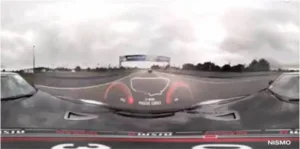Virtual reality is still a hot topic, even though the consumer uptake in the form of device purchases is still dismal. Market growth in terms of units sold are always impressive if the base numbers are low. If you sold one last year and two this year your market grew by 100%, but it’s still pretty insignificant though. This is where virtual reality is stuck at the moment. There was more than one unit sold last year, but most of the sales were in the form of evaluation units and developer kits. Without content, virtual reality headsets are pretty much “high tech sleep masks”.
Under these conditions, it is notable when a heavy hitter like Disney looks at a technology like VR and augmented reality solutions. According to an article by Reuters, James Pitaro, president of Disney Interactive is looking at virtual reality solutions to further Disney’s business goals. This includes looking at existing Disney characters or developing completely new characters for the virtual reality displays.
As we know from the consumer entertainment world, technology without content often poses issues with consumer adoption. Having Disney as a provider of entertainment content on board may make the adoption of virtual reality hardware much easier. When we look at the adoption of handheld devices, an old handheld gaming platform played a major role in converting many young children to the use of handheld devices. In some way one could argue that the Gameboy was the tablet of the former generation and certainly helped in the fast adoption of handheld devices like smartphones and tablets.
VR requires completely new thinking in creating content and game play scenarios, based on the 360 degree view ability. There are some demo applications available already, but not all have taken the form of games. There are also environments available for exploration and it is no far stretch to envision a walk through the Louvre in Paris while the Arizona heat outside makes staying indoors a necessity. The savings for the flights alone should pay for the hardware.
One of the keys for this development is 360 degree content and this is coming up quickly. Fox Sports is putting up some interesting sport events in a 360 degree video format, which it calls ‘virtual reality format’. The broadcaster streamed live content to VR headsets at the US Open golf championship and gave up to 300 users every day the chance to stand right where the five cameras are located. Of course, the users can turn around and look in any desired direction, depending on where the action is.
Both also announced that they will be working with NASCAR to bring car racing to the masses with unique camera positions that they could never access before. They tested this with executives and a Samsung Gear headset to show positions in the pitstop lane and right next to the track. They believe that live 360 degree video is a killer application for VR headsets.
Nismo TV went one step further by mounting a 360 degree camera on top of a Nissan GTR and took it to the Le Mans racing course. It also published the resulting video on YouTube.
The content is somewhat awkward to view, as the following two images demonstrate.
Source: NISMO TV
The image is actually a 360 degree view of the course and the race car. The right side of the image and the left side stitched together show you the windshield of the car. In other words, you sit on the hood facing forward, but can turn your head any way you want. It is up to the viewer what catches his attention or not.
Overall, all these content approaches may push the adoption of VR headsets a little, but the key will be the provided image quality and the sales price. – NH

